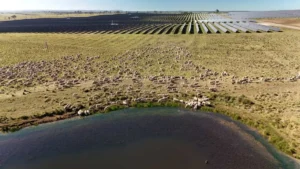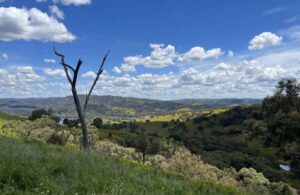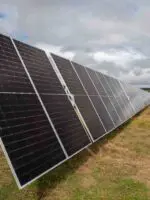Here is an interesting question for all the energy market boffins, real or assumed, out there watching the green energy transition at close quarters.
For a grid based around wind and solar, which 800 megawatt hour configuration for a big battery do you think would provide the best energy reliability for the grid?
- Would it be:
- Four 100 MW, 2 hour battery systems, or
- Just one 100 MW, 8 hour battery system?
Until now, politicians and many in the market would typically say number 2, because an eight-hour battery, on paper, looks like that would deliver the most long term storage, ostensibly to cover those lengthy wind and solar droughts that would otherwise cause the lights to go out, crash the economy and send us back to living in caves.
But is that actually correct?
Many experts now say that number 1 is best for grid reliability, because – they argue – those two-hour batteries have the flexibility to provide more capacity to meet short durations needs (up to 400 MW vs 100 MW), and can charge and recharge in a fraction of the time than the eight hour battery.
And a new analysis from AEMO Services suggests a rethink is needed to configure the right amount of storage needed for a future grid based around variable sources such as wind and solar, and bring down costs.
According to this new analysis, nearly 96 per cent of forecast “unserved energy” events are for periods of eight hours or less. Around two thirds, or 63 per cent, are for four hours or less.

The research has prompted a rethink in the NSW government about the long duration storage program it put into place to support the replacement of the state’s four remaining coal fired power stations which are due to close in the next decade.
NSW has sought 2 GW and 16 gigawatt hours of long duration storage by 2030. It was hoped this would pave the way for some pumped hydro projects, but to date the tender winners have been three eight-hour batteries, and one compressed air storage system in Broken Hill.
But the state is now asking whether eight-hour batteries are the best option. Or even pumped hydro. What if there is a cheaper way? Perhaps the definition of long duration storage, at least for battery purposes, should be cut to four hours, it says.
“Storage portfolios limited to the current LDS infrastructure (8-hour and above), build more depth than is forecast to be necessary to meet reliability needs in 2030,” the discussion paper issued by the NSW government says.
“Longer duration storage typically has a significant advantage in achieving lower costs per unit of energy (in terms of dollar per gigawatt hour). However this advantage is negated as longer duration portfolio pays for depth (more GWh than GW) that may not be economically utilities, potentially resulting in higher costs to consumers.”

The paper publishes this graph above to illustrate the point. To meet even Australia’s incredibly tight interim reliability target (only 0.0002 per cent unserved energy), the build cost of using mostly four-hour battery storage is substantially cheaper than longer duration storage, or pumped hydro.
“Portfolios with a mixed configuration of 4 hours and 8 hours storage represent lower overall build costs and provide a balance of rate capacity with energy storage,” the document says.
“The analysis also indicates that, for storage durations less than 8 hours, LTESA liabilities are lower which is linked to the ability of shorter duration projects to cost-effectively participate in a range of markets. (LTESAs are the underwriting contracts being bid for in the tenders).
“Overall, AEMO Services results indicate that greater flexibility in the duration of LDS infrastructure could meet reliability standards at a lower cost to consumers.”
Based on this, AEMO Services is recommending that the LDS tenders for projects to be built before 2030 be reduce from a minimum eight hours storage to four hours storage.
To be sure, the state is not ruling out the need for very long storage, of 24 hours or more that could be provided by pumped hydro or compressed air.
But it does seem to be suggesting that it might not need so much of it, and those projects can be supported, perhaps, by another program design that specifically rewards storage of eight hours or more.
But the paper also discussed the potential of distributed energy – household batteries and even electric vehicle batteries – that are often ignored in discussions about long term storage needs in a renewable grid.
“Community batteries and (virtual power plants) are closer to customer load and can provide network services that improve network reliability and security,” the document says.
“This means they may provide more value to consumers than utility scale storage projects.” It asks for feedback about whether these aggregated resources should be included in future LDS tenders.
It’s potentially bad news for many pumped hydro projects currently in development, which could be trapped up their tunnels without a panel as they find themselves caught between smaller more flexible technologies and projects with even deeper storage.
Some will be needed, but it is quite likely that many will not. And it raises questions about the real value of the big “vanity” projects such as Snowy 2.0, and the Pioneer and Borumba plans in Queensland.
Snowy Hydro justified the expense of its investment on the assumption that it would avoid the cost of gazillions of Tesla batteries, a claim that looked dodgy at the time.
Now, and given the cost blowouts on the projects and questions about its ability to deliver the storage duration it claims, it is looking more and more like a waste of money. But the government is paying, so who cares?










